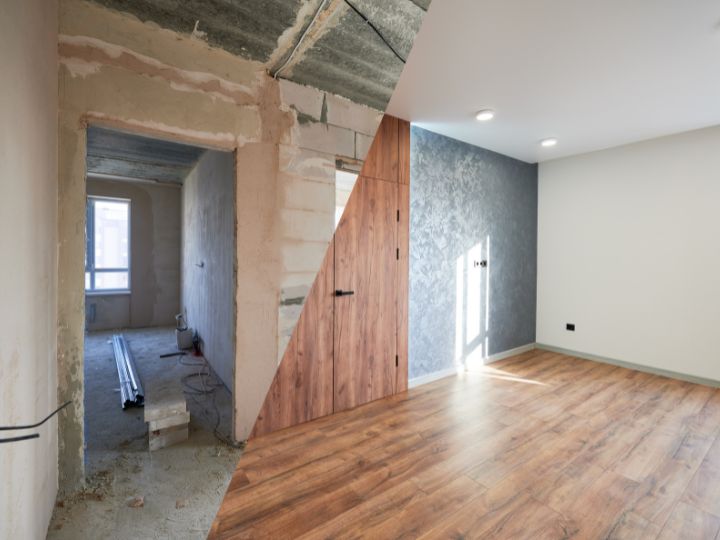
Outdated Electrical Systems: Safely Modernizing Your Historic Tempe Home

Historic homes in Tempe carry stories in every beam, window, and brick. These architectural treasures from the early to mid-20th century offer character and craftsmanship that modern homes simply can't replicate. However, behind those charming plaster walls and original hardwood floors often lies an electrical system that wasn't designed for today's power-hungry lifestyle.
If you own a historic Tempe home built before 1970, you're likely living with electrical infrastructure that predates smartphones, laptops, smart TVs, and the dozens of other devices that define modern living. The Electrical Safety Foundation International recommends all homes over 40 years old undergo an electrical inspection to ensure your home's electrical system can handle modern demands, as more than one-half of all homes in the USA have older electrical systems that often fall short of today's safety standards.
The good news? You can modernize your electrical system while preserving your home's historic integrity. Let's explore how to safely bring your vintage Tempe home into the 21st century.
Understanding Your Historic Home's Electrical Legacy
Before diving into upgrades, it's essential to understand what you're working with. Historic homes in Tempe typically feature one of several electrical systems depending on their age:
Knob and Tube Wiring (Pre-1950s)
Knob and tube wiring, often seen in houses built before the 1950s, usually isn't grounded, which is a fire hazard. This type of wiring can put your home at risk and isn't equipped to handle high power loads typical in modern homes. While this system worked adequately for the limited electrical needs of its era—typically just lighting and a few outlets—it's wholly inadequate for today's electrical demands.
Early Circuit Breaker Systems (1950s-1970s)
Homes from this era might have early electrical panels with limited amperage, often just 60 to 100 amps. Current code requires a minimum of 100 amps, although additional capacity is recommended for today's appliance filled households. Many older homes only have the 110-volt capacity that was enough for older, smaller appliances but can't handle the more modern washer, dryers, and refrigerators, on top of the many electronic devices people use today.
Aluminum Wiring (1960s-1970s)
Some historic homes from this period may contain aluminum wiring, which presents several dangers, such as loosening, overheating and catching fire.
Warning Signs Your Electrical System Needs Attention
Your historic Tempe home will often signal when its electrical system is struggling. Watch for these red flags:
Immediate Safety Concerns:
- Burning smells, discolored outlets and switches, flickering lights, frequent circuit breaker trips or fuses that constantly blow
- Outlets that feel warm to the touch
- Sparks when plugging in devices
- Mild electrical shocks from appliances
Capacity Issues:
- Insufficient outlets: Back in the day, one outlet per room was the norm. Today, that's simply not enough.
- Reliance on extension cords and power strips
- Lights dimming when major appliances turn on
- Inability to run multiple appliances simultaneously
Code Compliance Problems:
- Lack of GFCI outlets in bathrooms and kitchens
- Ungrounded outlets throughout the home
- Electrical panels with glass fuses instead of circuit breakers
The Modernization Process: Balancing Safety and Heritage
Updating your historic home's electrical system doesn't mean sacrificing its character. Here's how to approach the process thoughtfully:
Professional Assessment First
Before any work begins, hire a licensed electrician experienced with historic properties. Some expert electricians advertise their knowledge of working with historic homes. These professionals understand the challenges and nuances of these systems and are least likely to cause irreparable harm to them.
Strategic Planning for Minimal Impact
One of the best ways to modernize a historic home is by using non-invasive wiring techniques. Skilled electricians can often run new wires through crawl spaces, attics, or existing wall cavities. These methods reduce the need to cut into walls or alter original features.
When working with your contractor, discuss:
- Routing new wiring through existing pathways
- Utilizing basement and attic spaces
- Strategic placement of updated panels
- Preserving original architectural elements
Phased Approach
A simple suggestion for handling the old wiring is to tackle one room at a time. If you're on a tight budget, consider updating your home's wiring room by room and prioritize rooms that may require less work, like a bathroom.
Consider prioritizing:
- Kitchen and bathrooms - These high-moisture areas need GFCI protection and typically require the most power
- Living areas - Where most electronics and entertainment systems are used
- Bedrooms - Usually the least complex to update
Essential Upgrades for Modern Living
Electrical Panel Upgrade
Many historic homes have outdated panels that can't handle the load of modern electrical usage. Upgrading to a modern 200-amp panel provides the capacity needed for today's lifestyle while incorporating advanced safety features like arc-fault circuit interrupters (AFCI) and ground-fault circuit interrupters (GFCI).
GFCI Protection
Installing GFCIs is a relatively easy and inexpensive way to increase safety in these areas. Modern codes require GFCI protection in bathrooms, kitchens, garages, and outdoor areas.
Adequate Outlet Placement
Modern homes need significantly more outlets than historic homes originally provided. Strategic placement of new outlets reduces the need for extension cords and improves both safety and convenience.
Whole-House Surge Protection
With today's expensive electronics, whole-house surge protection is a wise investment that protects your devices from power surges and extends their lifespan.
Preserving Character While Updating Function
A big concern with modernizing an old home is maintaining its historic charm. Here are strategies to preserve your home's character:
Surface-Mounted Solutions: In some historic homes, exposed conduit and surface-mounted wiring can be part of the charm. Modern conduit comes in various finishes that can look stylish and intentional.
Period-Appropriate Fixtures: Choose outlet covers, switch plates, and light fixtures that complement your home's era while meeting modern safety standards.
Custom Solutions: Work with your electrician to find solutions that respect the original architecture and materials. For example, they can use existing cavities and spaces to run new wiring without cutting into beautiful old plaster or woodwork.
Smart Home Integration
Modern technology can enhance your historic home without compromising its character. Where new wiring isn't possible, wireless smart home technology offers a reliable workaround. Devices like smart thermostats, light switches, and security cameras can often operate on your home's existing Wi-Fi network.
Consider these smart upgrades:
- Smart lighting controls that can be installed without rewiring
- Wireless security systems
- Smart thermostats for improved energy efficiency
- Smart outlets that can be controlled remotely
Cost Considerations and Planning
On average, it costs about $2,000 – $12,000 to update electrical wiring in a home. The final price will depend on several factors, but the most critical are the project's scope and the electrician's rates.
Factors affecting cost:
- Size of your home
- Complexity of existing wiring
- Number of new outlets and fixtures needed
- Panel upgrade requirements
- Local permit fees
Budgeting tips:
- Get multiple quotes from licensed electricians
- Consider phasing the work over time
- Factor in permit costs and inspections
- Plan for potential surprises that older homes often reveal
The Importance of Professional Installation
You shouldn't replace an electrical panel by yourself. Working on household electrical systems without an electrical license is dangerous and may cause a fire. And depending on where you live, it may also be illegal.
Professional electricians bring:
- Knowledge of current codes and regulations
- Experience with historic home challenges
- Proper tools and safety equipment
- Insurance and warranty protection
- Coordination with permit and inspection processes
Energy Efficiency Benefits
Modernizing your electrical system often improves your home's energy efficiency. Modern electrical wiring systems are designed to operate more efficiently, ultimately reducing energy consumption and lowering your monthly utility expenses.
Additional efficiency improvements might include:
- LED lighting throughout the home
- Energy-efficient electrical panels
- Smart controls for heating and cooling
- Modern, efficient appliances that older wiring couldn't support
Working with Historic Preservation Guidelines
If your Tempe home is in a historic district or listed on historic registries, you may need to work within specific preservation guidelines. Research local requirements and work with contractors experienced in historic preservation to ensure compliance while meeting modern safety standards.
Planning Your Complete Home Renovation
Electrical modernization often pairs well with other renovation projects. If you're considering a complete home remodeling, updating your electrical system early in the process allows for easier integration with other improvements like kitchen remodeling, bathroom remodels, or home additions.
When electrical work is coordinated with other renovations, contractors can:
- Run new wiring before walls are closed up
- Install modern outlets and switches as part of room updates
- Coordinate with plumbing and HVAC improvements
- Ensure all systems work together efficiently
Future-Proofing Your Investment
Ensuring your electrical system is up-to-date prepares your home for future technological advancements, making it more adaptable and valuable, should you decide to sell down the road.
Consider these future-focused upgrades:
- Electric vehicle charging capability
- Solar panel readiness
- Whole-house battery backup systems
- Advanced home automation infrastructure
Embracing the Best of Both Worlds
Modernizing your historic Tempe home's electrical system isn't about choosing between safety and character—it's about thoughtfully integrating both. Bringing modern power to a historic home is a balancing act between preserving the charm of the past and ensuring safety and functionality for the present.
With careful planning, the right professionals, and respect for your home's heritage, you can enjoy all the conveniences of modern living while preserving the unique character that drew you to your historic home in the first place.
Your historic Tempe home deserves an electrical system that's as reliable as its timeless appeal. When you're ready to begin this important upgrade, select experienced general contractors who understand both modern electrical needs and the principles of historic preservation. The Contractor Guyz specializes in helping Tempe homeowners navigate complex renovation projects, bringing together technical expertise and sensitivity to historic properties.
Whether you're planning a comprehensive renovation or focused electrical upgrades, investing in your home's electrical infrastructure ensures safety, efficiency, and enjoyment for years to come. Once your electrical system is up to date, you can enjoy all the modern conveniences without worry. Imagine streaming movies, charging devices, and running your HVAC system all at once without a hitch.
Ready to bring your historic Tempe home safely into the modern era? Start with a professional electrical assessment to understand your current system and develop a modernization plan that respects your home's past while embracing its future.
Latest Blogs
Transform your dream home into reality with our premier renovation services!
Book a call with us today and let's create the perfect space tailored just for you.

.svg)
.svg)



